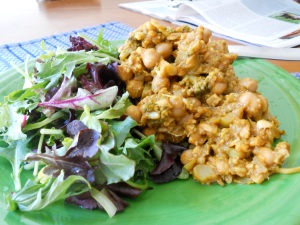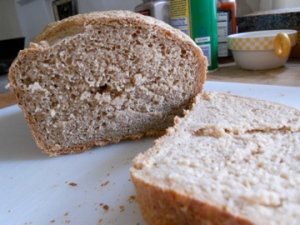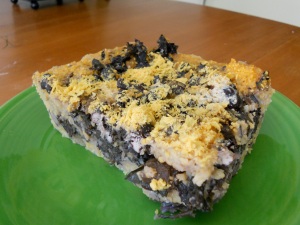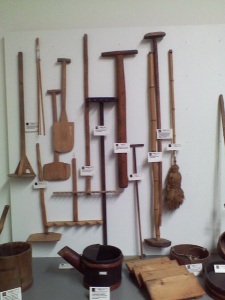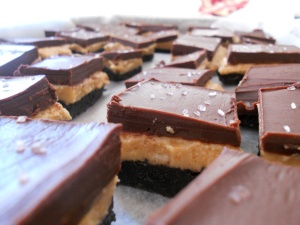I will start this post off with an assortment of cute animal pictures taken at Animal Place. Animal Place is a farm animal sanctuary that houses and rehabilitates farm rescues. I had the privilege of going on a tour, meeting the cute animals, and conversing with individuals who have a radically different view about food. After the cute pictures, I will elaborate on my experience and possibly, slightly, rant.





Adorbs.
I think animals play a vital role in the food system. Granted, the industrial food system is broken (metabolic rift) and animals are exploited and unnecessary waste is created and there are too many antibiotics and pesticides being used. The food system I am talking about is a closed and sustainable system where animals (cows, pigs, chickens) live on a biodynamic farm that grows a variety of crops year round. Animals graze and animals poop and the poop is turned into nutrient rich compost for feeding the soil and keeping a harmonious balance. These animals would be living an animal-style life because they get to graze and wander around. They get fed and watered. They are not treated as machines, bred to produce beyond their capacity. Chickens, pigs, cows, etc get to express their intrinsic animal nature. These animals would also provide milk and eggs and at some point, even meat.
Despite being a non meat eater, I still think that eating meat is part of being human and being an omnivore [Yes, we eat way to much of it in the US and yes, we do need to cut back on meat consumption, and yes animals need to be seen as living beings because they are living beings] However, we have evolved and now live at a time where one can survive without eating the flesh of another creature. Those in a privileged position can make choices about what they decide to put into their bodies. And for those who are conscious about their ecological footprint becoming vegetarian is one of the most influential decisions one can make. But there are many who live in parts of the world where meat is a staple food and easier to obtain that fresh produce. Cold climates come to mind, or pastoral communities that raise animals as part of their livelihood. Where no produce grows it might be more efficient to be a meat eater since that meat is a local source of nutrition that conveniently turns grasses and hay that humans cannot digest into digestible meat. It is not culturally sensitive to assume that everyone in the world can be a vegan.
This view would have been rejected and torn apart had I brought it up at the animal sanctuary. They approach veganism and vegetarianism from a different lens: that of eliminating suffering and pain. I agree that animal welfare is important but I do not agree that all suffering can be eliminated (farmworkers anyone?) and I do not think that the world going vegan would solve environmental issues. Vegan alternatives are filled with strange ingredients and fillers and palm oil. Palm oil is a leading cause of clear cutting forested land which hurts animals, humans, and the environment. Isn’t real cream cheese from grass fed, grazing cows much better for your body and the planet then fake cream cheese made from a variety of soy and oils? I would like to think that yes, it is, and I wish there was a way to measure the environmental impact of foods and their counterparts.
I was interested to learn more about the “veganic” farm that they had been cultivating. What is veganic agriculture? It means using absolutely no animal inputs. I can see how one would not want to use fish or chicken meal because both of those are biproducts of the industrial food system. But in a veganic farm, that also means using no animal poop. So, although there was an ample poop supply from the animals at the sanctuary, none if it was applied to the farm soil. They wanted to show that food can grow outside of an animal based system. So how is the soil kept fertile? Food scraps, greens, browns, cover crops, and kelp. I think that it is an interesting alternative, however I am hesitant as to how feasible it would be in a farm system that includes animals because, like I said before, I think animals and the land have an intimate relationship. It could be seen in the green pastures at the sanctuary: pastures for animals+animal poop=really green and lush grasses. See, animals are important!
Because animals are important, I think those who chose to eat meat need to have an awareness that eating chicken is, in fact, eating a chicken. I admire urban homesteaders and others who raise and slaughter their own animals because this breeds a deep appreciation for where flesh actually comes from. Furthermore, when the entire animal is used: the meat, the skin, and the bones, it is not treated like a piece of devalued trash.
I knew that many of these people had pets of their own. So the question is, what do the pets eat? I was shocked to find out that dogs and cats are put on vegan diets. I had an interesting conversation with a fellow who found it painful when his outdoor cat killed and ate a bird or a lizard or a rat. He explained that it was easy to make sure indoor pets cause no suffering to other living beings but it was difficult to ensure that his outdoor cats didn’t give in to their intrinsic predatory nature. Isn’t preventing your companion animal from eating their natural diet somewhat inhumane? Isn’t a vegan dog or cat like a cow or salmon eating corn? None of the above are natural.
What also bothered me was how, during the Q&A session, veganism was talked about as though it was the endpoint on a trajectory. The phrase “for those who are not vegan yet” was constantly being repeated. Implicitly it means that everyone would one day realize how enlightening a vegan way of life is. And, that everyone has the privilege of eating vegan. And that one day, I too might drop my farmers market cheese and replace it with a block of diaya. [Diaya and veganism have their place when the vegetarian alternative comes from a suspicious and inhumane source. And I realize that I am privileged to make the decision to avoid eating factory farm based foods]
In sum, if the goal of Animal Place is to convert omnivores and vegetarians into happy vegans, they are not going about it in a proper way. I like to think of myself as open minded and willing to listen to the points of view of others, but that was not the atmosphere being created. It was not welcoming to those who think of the food system as just that: a system. I felt uncomfortable bringing up my points of view that might come into conflict with what they believe because open dialogue was not welcome. I respect the goals of the sanctuary and I think it is important for people to realize how eating meat effects the planet, and it is important for people to know where their meat comes from. They kept talking about suffering, and I respect that that is the lens through which they approach their eating decisions. Ant yet, for individuals concerned with suffering I am surprised at how little they seemed to care about the farmworkers that spend hours in the fields in slavery-like conditions for them to have their kale salads. Fixing the food system requires fixing symbiotic relationships between plants, animals and humans. It requires better conditions for farm and kitchen workers. It requires respecting the flesh or animal bi-products that are being consumed, and consuming less of them in a more conscientious way.


